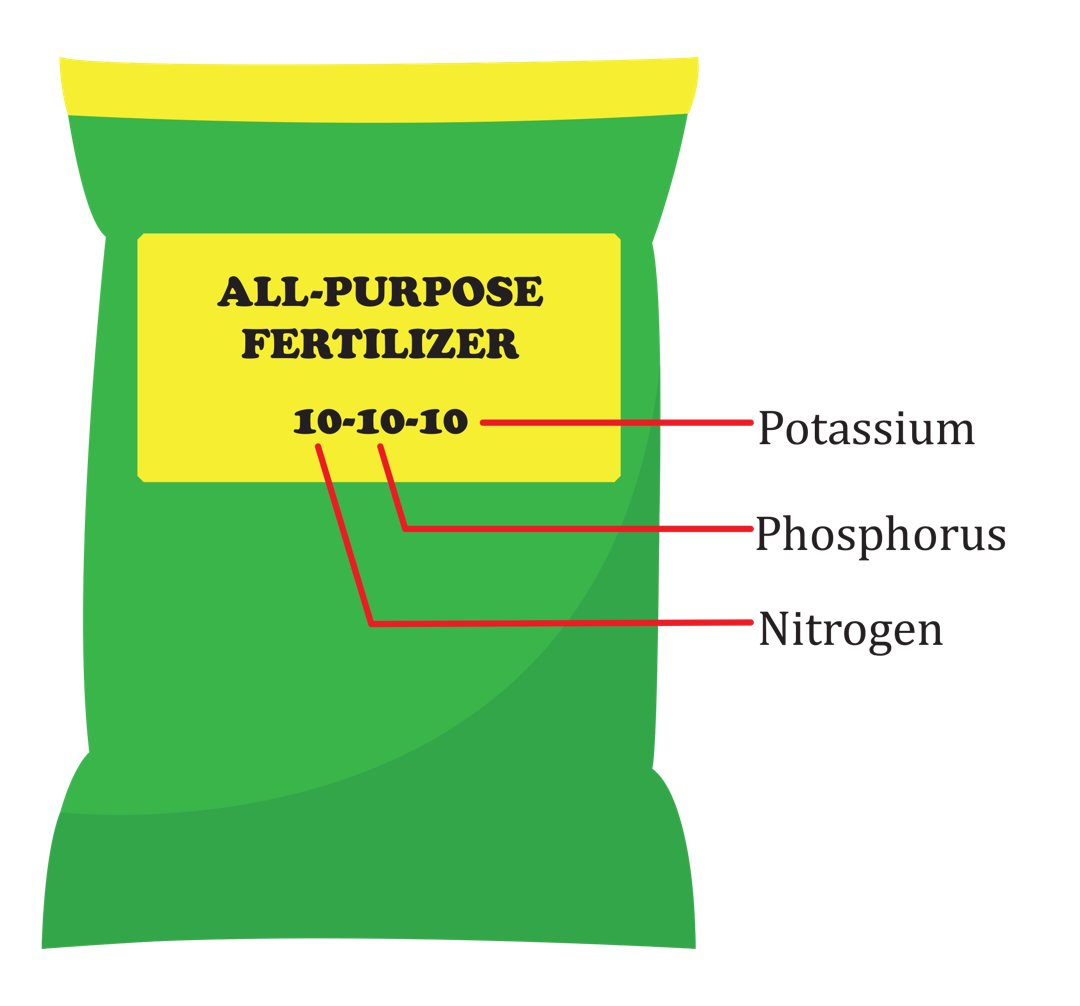Not everybody fertilizes their garden. However, consistent fertilization can make or break your crop yield. Different plants require different ratios of nutrients, hence the plethora of different fertilizer types available today.

When you look at most fertilizer bottles, you will see a sequence of three numbers separated by dashes; 5-5-5, for example. These numbers represent the ratios of three specific nutrients which are essential for growing most plants, expressed as percentages. In order, the numbers represent:
Nitrogen: Nitrogen accounts for vigorous leaf growth and plant greenness. Plants that do not receive their required amounts of nitrogen will grow very slowly and take on a pale color. However, if you over-apply nitrogen, plants will put too much effort into leaf growth, causing smaller than expected fruits.
Phosphorus: Phosphorus contributes to root and flower growth. Oftentimes you will see ‘phosphate’ written on a fertilizer label instead of ‘phosphorus;’ phosphate is simply a compound containing phosphorus. This nutrient also helps with fruit and seed development. Phosphorus helps plants utilize other nutrients effectively. If a plant does not receive enough phosphorus, it will develop weak roots, and will often be devoid of fruits and flowers. If you live directly next to a body of water, it is best to limit your phosphorus use, as excessive phosphorus in water bodies can cause harmful ecological issues.
Potassium: Potassium, sometimes referred to as the compound ‘potash’ on labels, helps with overall plant growth. It helps to balance root growth and top growth. This equilibrium helps plants in many aspects, including cold/drought tolerance, and disease/pest resistance.
For example, a 5-5-5 fertilizer contains 5% nitrogen, 5% phosphorus, and 5% potassium. It is crucial to select the proper fertilizer when planning your garden. Most vegetables need more phosphorus and potassium than nitrogen, but there are always exceptions. Plants like zucchini are heavy feeders, and if the soil does not contain the required nutrients, you could run into trouble. There are other plants that can thrive in very nutrient-devoid soil. If you do not want to deal with the burden of fertilizing, these plants might be your best bet. Each plant description on the Planter app contains feeding instructions, specific to the selected plant.
Sources:
https://www.ncagr.gov/cyber/kidswrld/plant/label.htm
https://www.pennington.com/all-products/fertilizer/resources/understanding-fertilizer-labels
